At the end of 2024, the Beijing Historical and Cultural Heritage Protection and Inheritance System Plan (2023–2035) was officially released, further strengthening the protection of 1,056 historical buildings, including some of Beijing's "Ten Great Buildings" such as the Great Hall of the People, the Cultural Palace of Nationalities, and the Minzu Hotel. As the first large-scale construction projects in Beijing after the founding of the People's Republic of China, the "Ten Great Buildings" are not only milestones in the architectural history of the People's Republic of China but also a vivid testament to the ethos of the "Guanghua Road."
In December 1958, to fulfill the artistic design for the "Ten Great Buildings" , the Central Academy of Arts & Design, predecessor of the Academy of Arts & Design, Tsinghua University today, organized a decoration design team of 75, including 17 teachers and 58 senior-grade students.
With passion and a pioneering spirit, the team devoted themselves into the decoration design of the Great Hall of the People, the Museum of the Chinese Revolution and the Museum of Chinese History (later merged into the National Museum of China), the Cultural Palace of Nationalities, the Diaoyutai State Guesthouse, the Military Museum of the Chinese People’s Revolution, and the Minzu Hotel.
The "Guanghua Road" ethos was reflected not only in the tireless and collaborative work ethic of the teachers and students but also in their innovative practice of perfectly integrating traditional Chinese art with modern architectural concepts. This created the unique artistic value and cultural significance of the "Ten Great Buildings", setting a benchmark for the People's Republic of China’s architectural endeavors.
Today, the spirit of "Guanghua Road" continues to thrive, inspiring a new generation of artistic design professionals. The series on the Splendor of the Times: Artistic Imprints in Beijing's "Ten Great Buildings" revisits the passionate years by recounting the stories of the academy’s teachers and students and their contributions to the "Ten Great Buildings", writing a new chapter of artistic excellence in the modern era.

Li Mianlu's Manuscript: Art Design of Beijing's "Ten Great Buildings" and the Teaching Plan
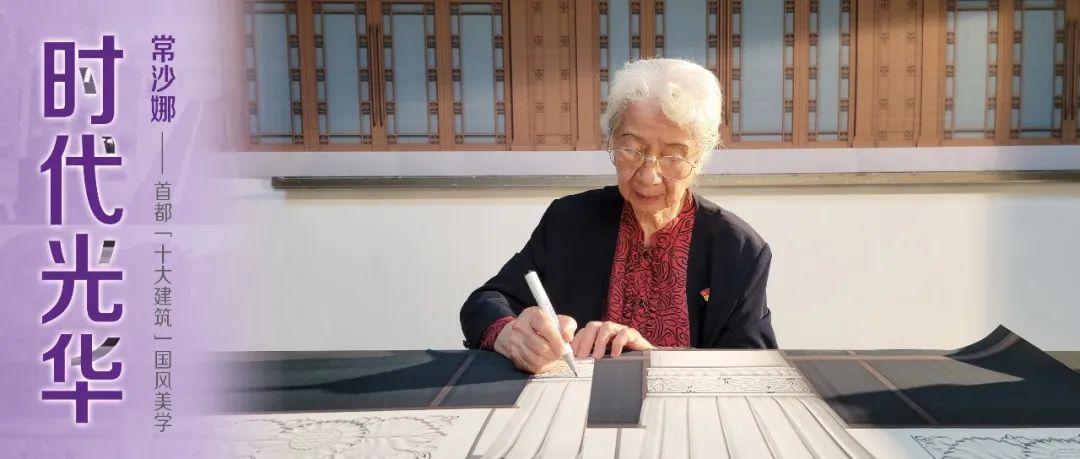
Splendor of the Times: Artistic Imprints in Beijing's "Ten Great Buildings"
An Exclusive Interview with Chang Shana
In the 1950s, Chang Shana participated in the decoration design of Beijing's "Ten Great Buildings", creating timeless masterpieces such as the ceiling design of the Great Hall of the People's banquet hall and the golden gate design of the Cultural Palace of Nationalities. With the passage of decades, these buildings still stand prominently in the heart of Beijing, serving important social functions and remaining iconic symbols of the city.
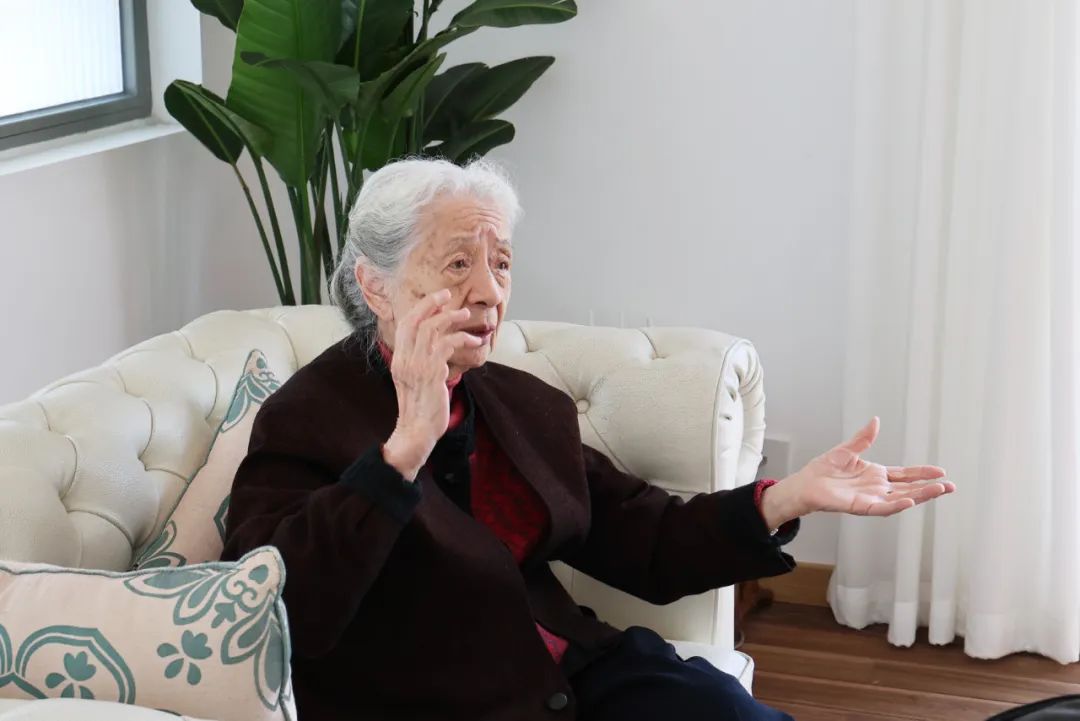
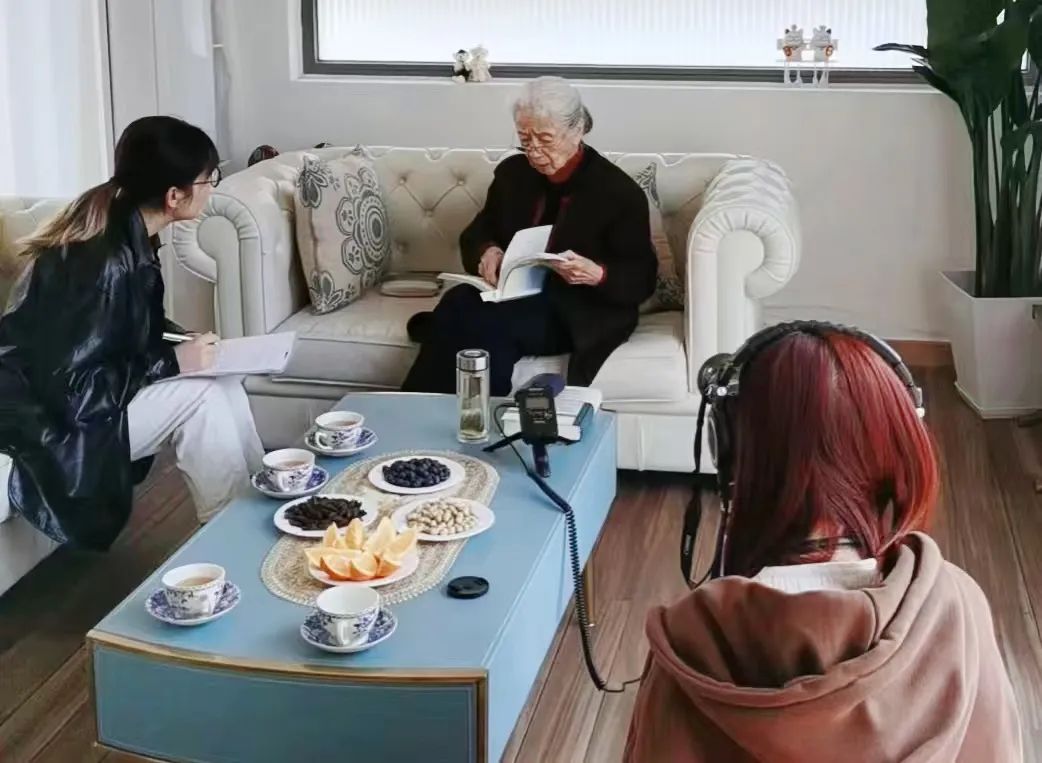
Interview Scene
"Good design must have cultural roots and innovative thinking, meeting the needs of the times"; "Arts and crafts design should be associated with daily life—clothing, food, housing, and transportation—to serve the people"; "Premier Zhou Enlai's design philosophy for the "Ten Great Buildings"—national, scientific, and popular—represents not only a continuation of cultural heritage but also a manifestation of cultural confidence..." At an advanced age of 94, Chang Shana recalls her involvement in the design of Beijing's "Ten Great Buildings" with deep emotion.
"Make the Past Serve the Present, and the Foreign Serve China"
"Make the Past Serve the Present, and the Foreign Serve China" was not only a call of the times but more importantly a testament to artistic wisdom. From her birth in Lyon, France, in 1931, to following her father, Chang Shuhong, in safeguarding the thousands-year artistic treasures of the Mogao Caves between the blue sky and yellow sands; from returning to China after studying abroad and meeting her mentor, Lin Huiyin, to embracing the field of arts and crafts design and becoming the first female president of the People's Republic of China’s first higher education institution for art and design—Chang Shana's life is a legend. She adopted the philosophy of "making the past serve the present, and the foreign serve China" throughout her artistic career, becoming an outstanding practitioner of this vision.
"The work for the Soviet Exhibition Center (today's Beijing Exhibition Center completed in 1954) can be said to be the prelude to the Beijing's 'Ten Great Buildings' project," Chang Shana once recalled.
By 1953, Chang Shana had been transferred to the Department of Practical Arts at the Central Academy of Arts & Design. The Soviet Exhibition Center was completed in 1954. Chang Shana, along with her colleague Wen Lianchang, participated in the artistic design of the Exhibition Center, collaborating with the renowned Soviet architect Andreev and his wife, Keslova. This marked the beginning of her journey into architectural design.
Under the leadership of Mr. Xi Xiaopeng and the guidance of Andreev, Chang Shana and her team poured their efforts into the interior and exterior decoration design of the Exhibition Center. To fully embody the theme of Sino-Soviet friendship, the building’s architecture featured a strong Russian artistic style while the interior decoration aptly adopted the decoration of Chinese ancient structures. The columns in the exhibition hall were adorned with Dunhuang-inspired spiral patterns which were crafted with traditional Chinese gold-foil techniques, exuding a timeless elegance. In the Moscow Restaurant, columns were decorated with copper animal sculptures embedded in traditional Chinese diamond-shaped patterns, creating a lively and harmonious blend of Eastern and Western aesthetics.
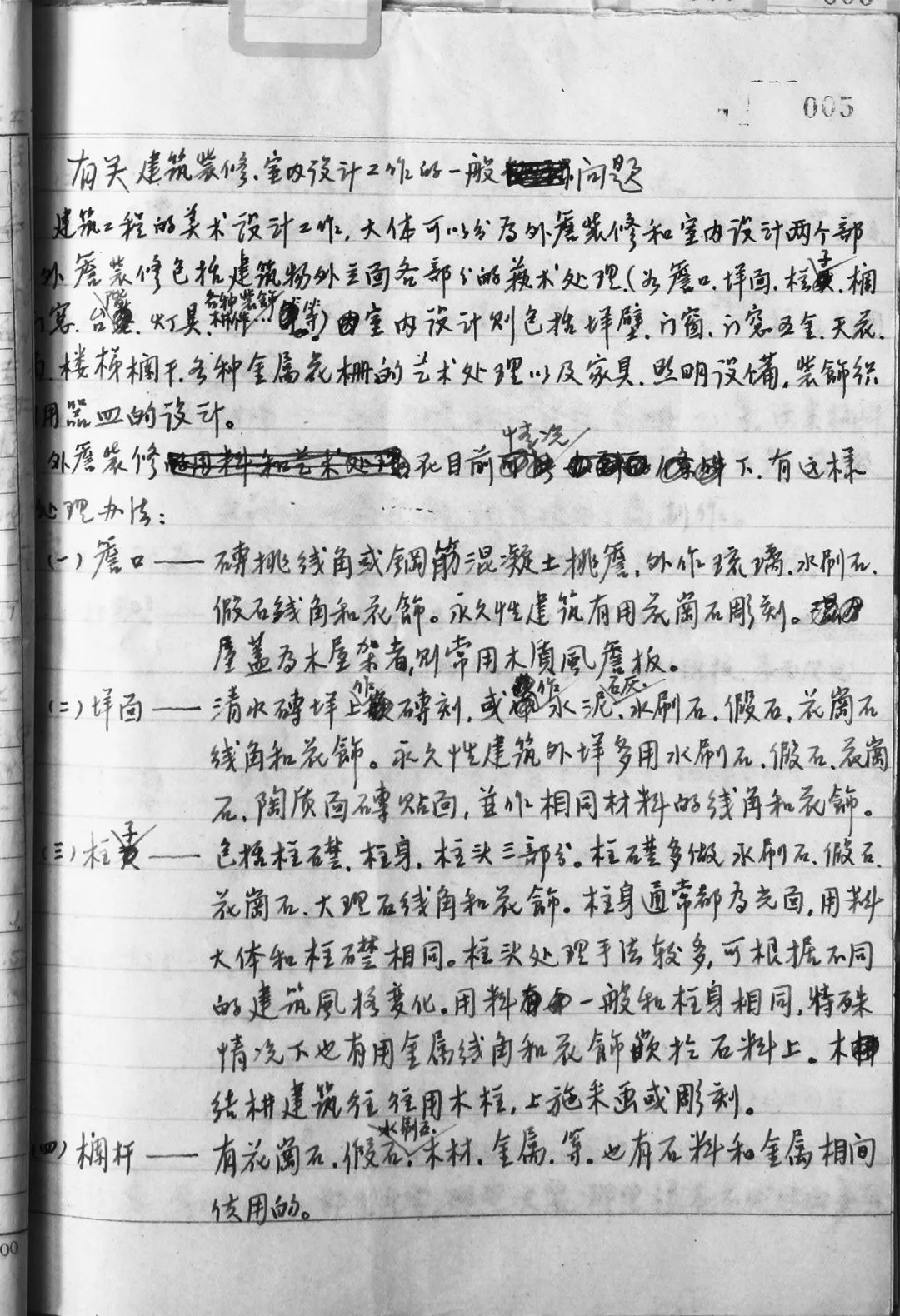
Xi Xiaopeng’s Lecture Script: General Issues on Architectural Decoration and Interior Design
The decoration of the cinema hall within was a collaborative effort by Chang Shana and Wen Lianchang. They boldly utilized the vaulted ceiling of the grand hall, creating an openwork decoration with a continuous pattern of gradient blue-green hues. The design not only ingeniously integrated the vaulted structure of Western architecture but also incorporated the charm of traditional Chinese architectural painting, resulting in a distinctive artistic effect that garnered unanimous approval from Andreev and his team. More than 70 years from then, the cinema hall of the Beijing Exhibition Center has been converted into an auditorium. While the colors may not be as vibrant as they used to be, the vaulted ceiling remains there, and the openwork color painting has traversed the long river of time, still shining brightly.
That year, Chang Shana gained invaluable experience through continuous learning and practice. Through her interactions with Andreev and his wife, she felt the sincerity and dedication of the Soviet experts as they guided Chinese designers on the construction site. From Xi Xiaopeng, she acquired extensive knowledge about architectural decoration. "I learned to read engineering drawings, understood the relationships between plan, elevation, and section views, mastered the use of scale, and learned how to create small-scale drafts and scale them up to 1:1. I also grasped the entire design process of continuous revision and refinement, which laid a solid foundation for my later involvement in the decoration design of the 'Ten Great Buildings'," Chang Shana wrote in her memoir, Yellow Sands and Blue Sky.
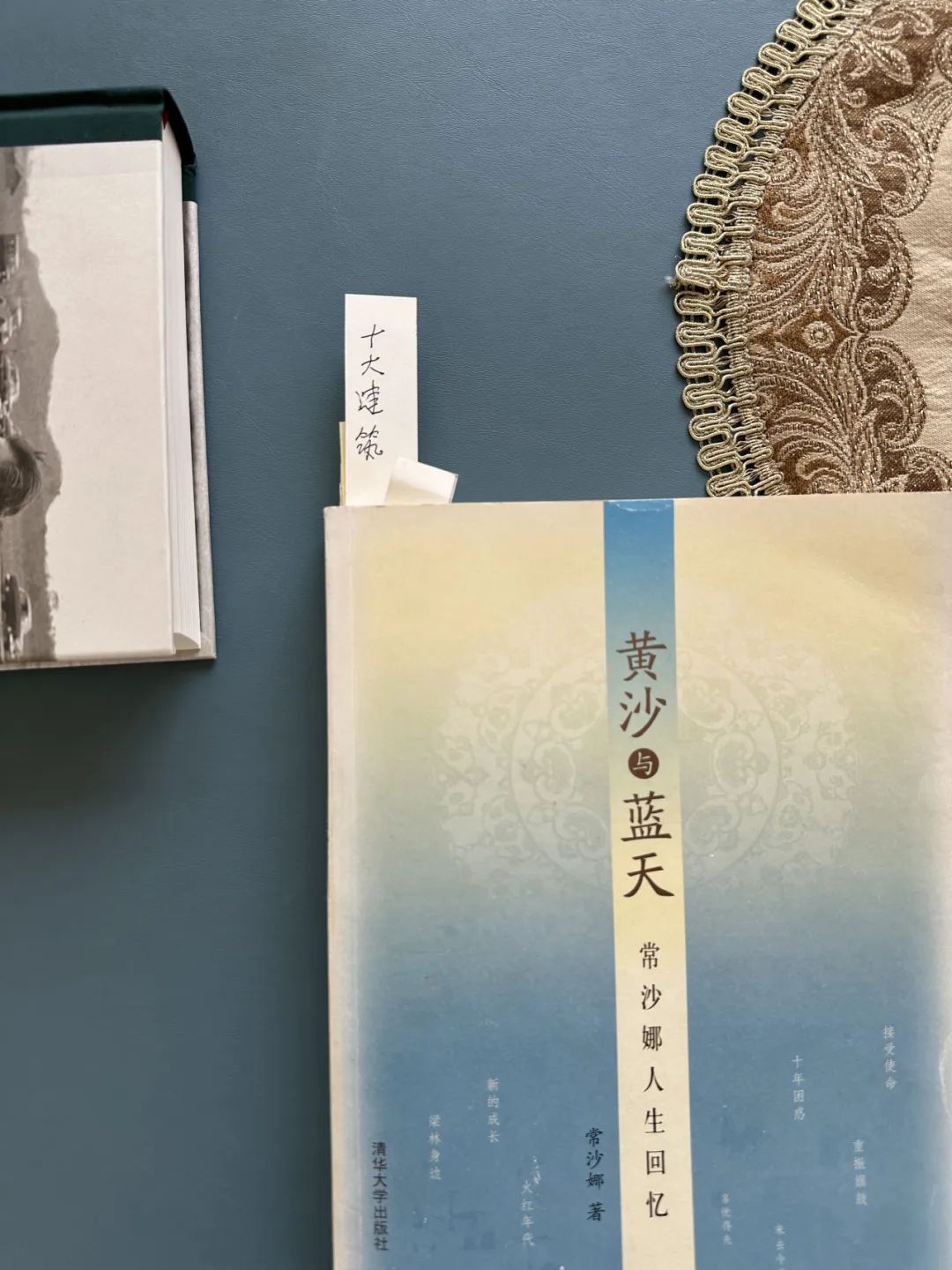
In her memoir Yellow Sands and Blue Sky, Chang Shana annotated and reorganized the sections related to Beijing's "Ten Great Buildings".
This experience not only marked Chang Shana’s initial involvement in the field of architectural design but also prompted her to embed the philosophy of "making the past serve the present, and the foreign serve China" into her artistic practice. Taking the ancient charm of Dunhuang as her brush and Western techniques as her ink, she became one of the key founders of the People’s Republic of China’s arts and crafts design.
Design Must Be Integrated with Architectural Function
In the field of architectural design, there is an enduring truth: "Design must be integrated with architectural function." Chang Shana’s work on the Great Hall of the People vividly embodied this principle.
If a city is a book, then its landmark buildings are the cover, encapsulating the city’s image, essence, and character. Among Beijing's "Ten Great Buildings", we take the Great Hall of the People for example. With a total floor area of 171,800 square meters, the Great Hall of the People has a grand column-free auditorium capped with a large-span dome which has a seating capacity of 10,000, as well as a banquet hall that can accommodate 5,000 guests... The complexity of its engineering, the high construction standards, the richness of its craftsmanship, and the speed of its construction were unparalleled in China at the time.
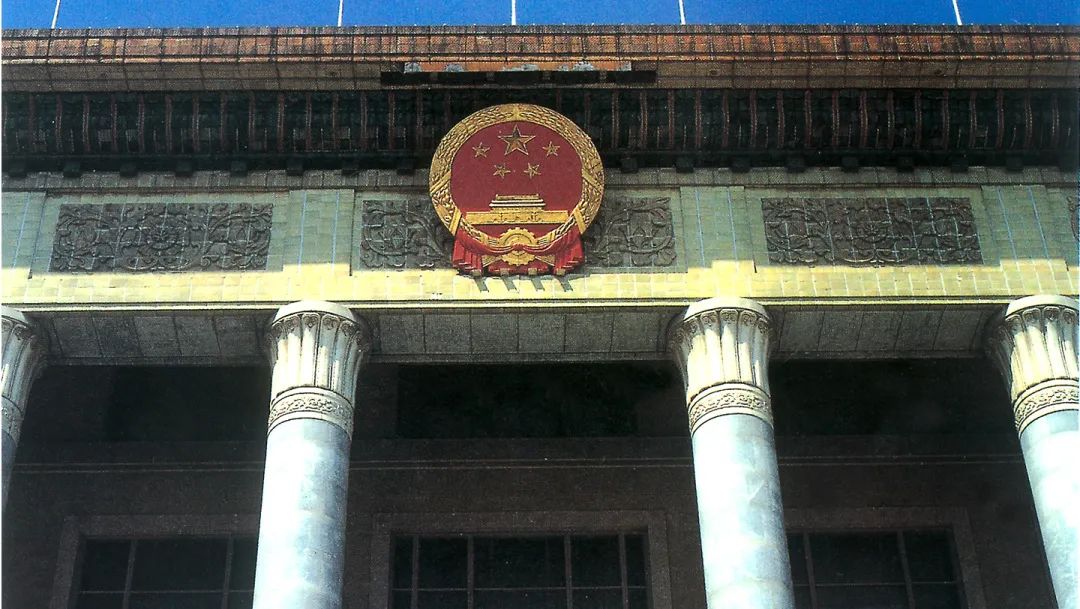
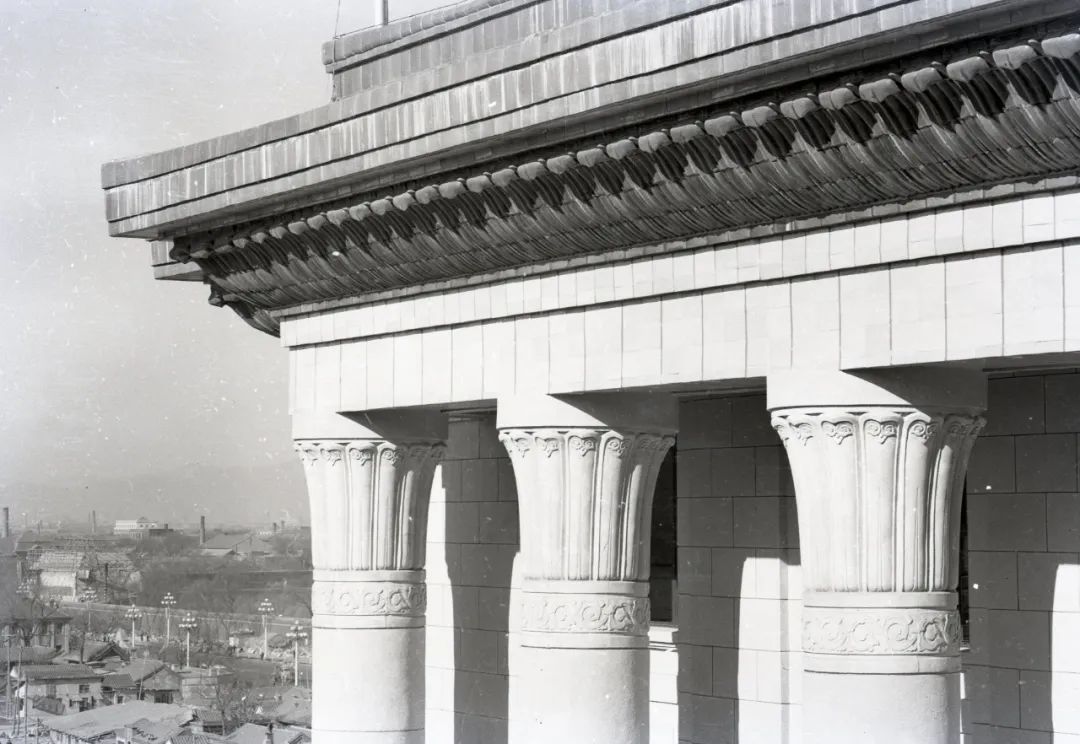
The Great Hall of the People's Frieze Design by Chang Shana
In 1956, the Central Academy of Arts & Design was established. Chang Shana was transferred to the Department of Dyeing and Weaving of the Academy where she taught foundational pattern design and dyeing and weaving design. Two years later, to celebrate the 10th anniversary of the founding of the People’s Republic of China, the Party Central Committee and the State Council decided to construct the first batch of "Ten Great Buildings" in Beijing, to mark the dawn of a new era. Under the leadership of Mr. Lei Guiyuan, 75 teachers and students from the Central Academy of Arts & Design were divided into six working groups and assigned to do design work at six construction sites for the "Ten Great Buildings", with one working group at one site.
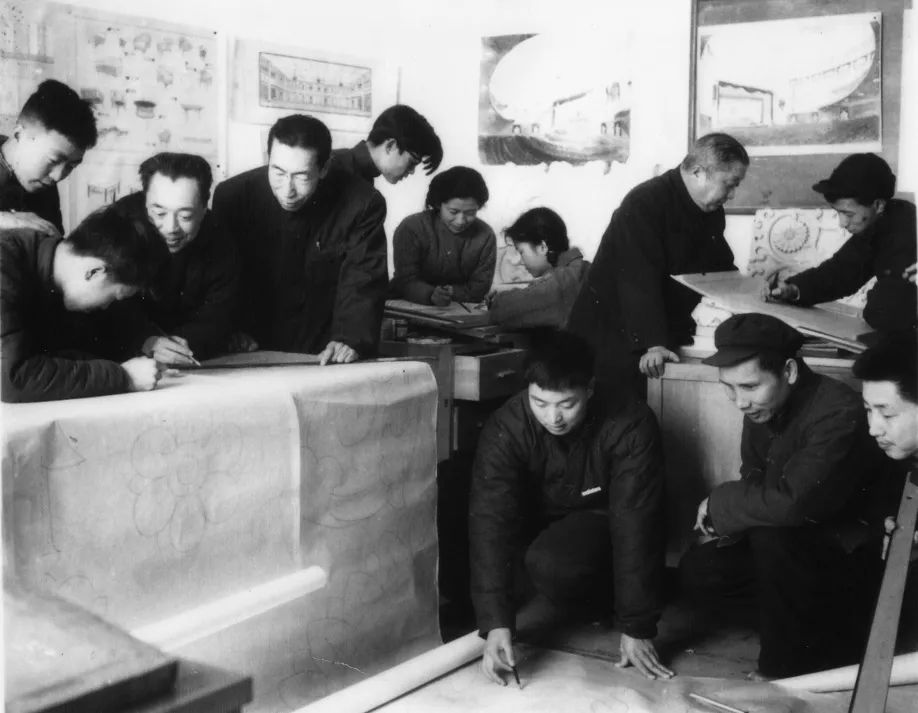
Lei Guiyuan (L3), Xu Zhenpeng (L4), Chang Shana (L6), Zhang Guangyu (L8), Wu Lao (R2 in the front row) are discussing the interior decoration design plan for the Great Hall of the People with the students from the 1957 class of the Interior Decoration Department.
(Photo Credit: A student from the 1955 class)
Given the key project of the Great Hall of the People, the Central Academy of Arts & Design organized Xi Xiaopeng, Chang Shana, and Cui Yi to collaborate with Beijing Design Institute to complete the decoration design. Xi Xiaopeng was the group leader while Chang Shana was primarily responsible for the ceiling decoration, color painting, and lintel design of the banquet hall. Among all work, the ceiling decoration design of the banquet hall impresses Chang Shana most.
"Designing for the Great Hall of the People was an important political task, carried out under the personal guidance of Premier Zhou Enlai," Chang Shana recalled. She remains deeply impressed by Premier Zhou’s guideline: to "draw inspiration from national traditions, explore new forms and content for the People’s Republic of China’s architectural art, making the past serve the present and the foreign serve China"; to ensure that "the Great Hall is a hall for the people, with the stage and audience areas integrated"; and to make the "ceiling lighting and decoration symbolize and manifest that the masses’ hearts are united under the Party’s leadership." Under these principles, Chang Shana, who felt a deep connection to Dunhuang, had inspirations. She decided to use the Tang Dynasty-style baoxianghua (composite floral motif) from Dunhuang as the main pattern for the banquet hall’s ceiling decoration to accentuate a magnificent national style.
However, when she confidently presented her design draft, it was rejected by the chief architect, Zhang Bo: "Shana, your design doesn’t address the ventilation or lighting issues. It’s not feasible." Under Zhang Bo’s guidance, she revised the design multiple times, ultimately finalizing the ceiling decoration of the Great Hall’s banquet hall as we see it today: a central lotus surrounded by small lights and ventilation openings based on Dunhuang’s pearl-pattern motifs. "It is aesthetically harmonious, yet rich in decorative details." This ceiling chandelier has since become a classic example of applying Dunhuang art to modern design.
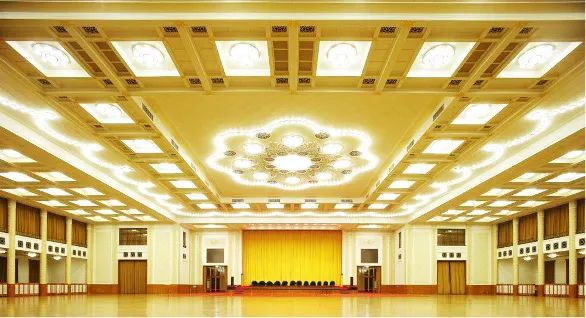

Ceiling Lighting of the Great Hall of the People Banquet Hall, Designed by Chang Shana
Through this experience, Chang Shana got an important principle of design: design must serve the theme, and only the forms and patterns that best align with the theme can elevate the design. Design can not merely pursue visual beauty but must be closely integrated with architectural function, materials, and craftsmanship. This philosophy not only guided her lifelong design practice but also became a valuable reference for later architectural design. Over half a century later, the ceiling of the Great Hall of the People’s banquet hall remains as radiant as ever. These elements, both traditional and modern, luxurious yet dignified, fully embody the grandeur of a great nation.
2024 marks the 65th anniversary of the completion of the Great Hall of the People. The CCTV-4 documentary shooting crew for China Connection accompanied Chang Shana on a return visit to the Great Hall, which enabled her to relive those precious memories. "My design concept back then, I finally see again..." Chang Shana’s gaze was firm and profound.
"National, Scientific, and Popular"
Architecture is the growth ring of a city. Every landmark building is rooted in the soil of its era, bearing witness to the changes over time. Take Beijing's "Ten Great Buildings" for example. Every brick, tile, light, and shadow encapsulate the ethos of that time, as well as the aspirations and dreams of the people.
As timeless masterpieces, the "Ten Great Buildings" feature many ingenious designs that have stood the test of time. For example, the Cultural Palace of Nationalities boasts a unique architectural style rich in ethnic charm. Its slender and elegant spire, standing 67 meters tall, allows people from all ethnic groups across the nation to enjoy a panoramic view of Beijing. The peacock-blue glazed tiles on the tower’s roof, distinct from the yellow of the Forbidden City, exude a lighter and more lively atmosphere.
On the 65th anniversary of the completion of the Cultural Palace of Nationalities, Chang Shana, one of the main contributors to its decoration design, once again stepped into this place that holds countless memories and emotions for her. Standing before the golden gate and gazing at the four characters reading "Unity" and "Progress," Chang Shana said with deep emotion, "This is my design. Our country has 56 ethnic groups, and we must unite and progress." The metal decorations on the gate feature scrolling vine patterns from Dunhuang murals, paired with sunflower-like flowers commonly used in that era, and adorned with transparent colored glass to highlight the words "Progress" and "Unity."
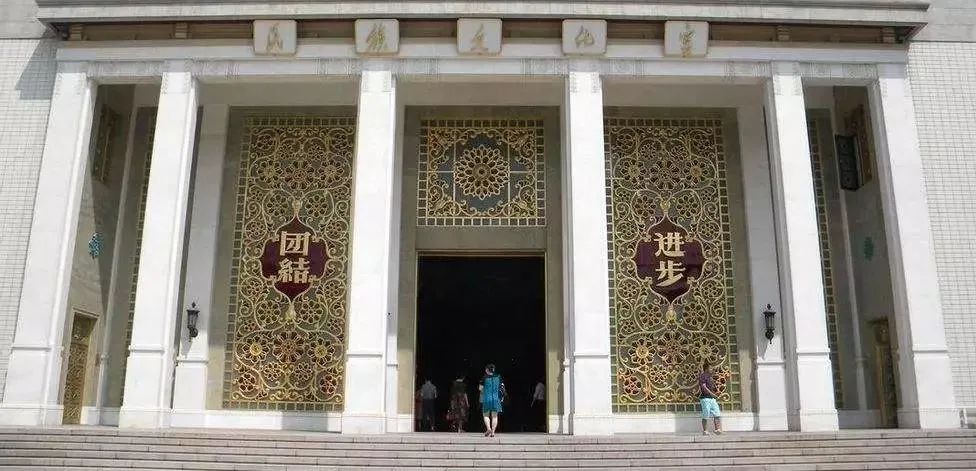
Metal Decorative Gate of the Cultural Palace of Nationalities, Designed by Chang Shana
In her memoir Yellow Sands and Blue Sky, Chang Shana reflected: "When I was designing, I certainly couldn’t foresee what would happen many years later. Simply with the fearlessness of a young novice, I boldly did my work while learning. That era of rebuilding from the ground up provided a grand stage for young talents like us, allowing us to grow rapidly through practice."
While working on the design of Beijing's "Ten Great Buildings", Premier Zhou Enlai emphasized the principles of being "national, scientific, and popular." Whether it was the Great Hall of the People or the Cultural Palace of Nationalities, she adhered to these principles. Since then, she has continued to learn, practice, and experience, making this her lifelong philosophy of artistic design.
Chang Shana emphasized, "The core of Chinese culture is 'national, scientific, and popular,' and this is unshakable. China has a long history, and each historical period is unique. Our country has 56 ethnic groups, each with its own distinct customs and traditions. These require us to have in-depth study and apply them to modern society. Modern production and design must have their distinctive characteristics." This philosophy is reflected in her design works across various periods.
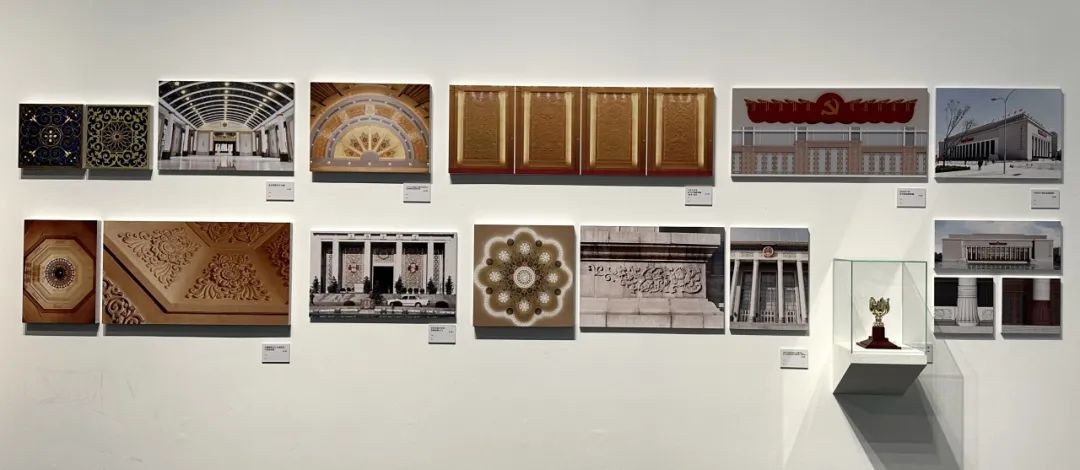
Documents about Chang Shana's Participation in Artistic Creation of Major National Historical Themes
On the occasion of the centenary of the Communist Party of China in 2021, the Museum of the Communist Party of China opened in Beijing. Chang Shana served as a design consultant for the museum's exterior facade and emblem. She personally led the team in designing the column capitals, bases, architraves, lattice walls, bronze doors, and the museum emblem. Her work once again achieved outstanding success in the artistic creation of major national historical themes.

Chang Shana is making and revising design plans.
The "Blossoming Dunhuang: Chang Shana’s Eighty Years of Art and Design Exhibition" has been staged in numerous cities at home and abroad, including Beijing, Dunhuang, Moscow, Istanbul, and Paris.
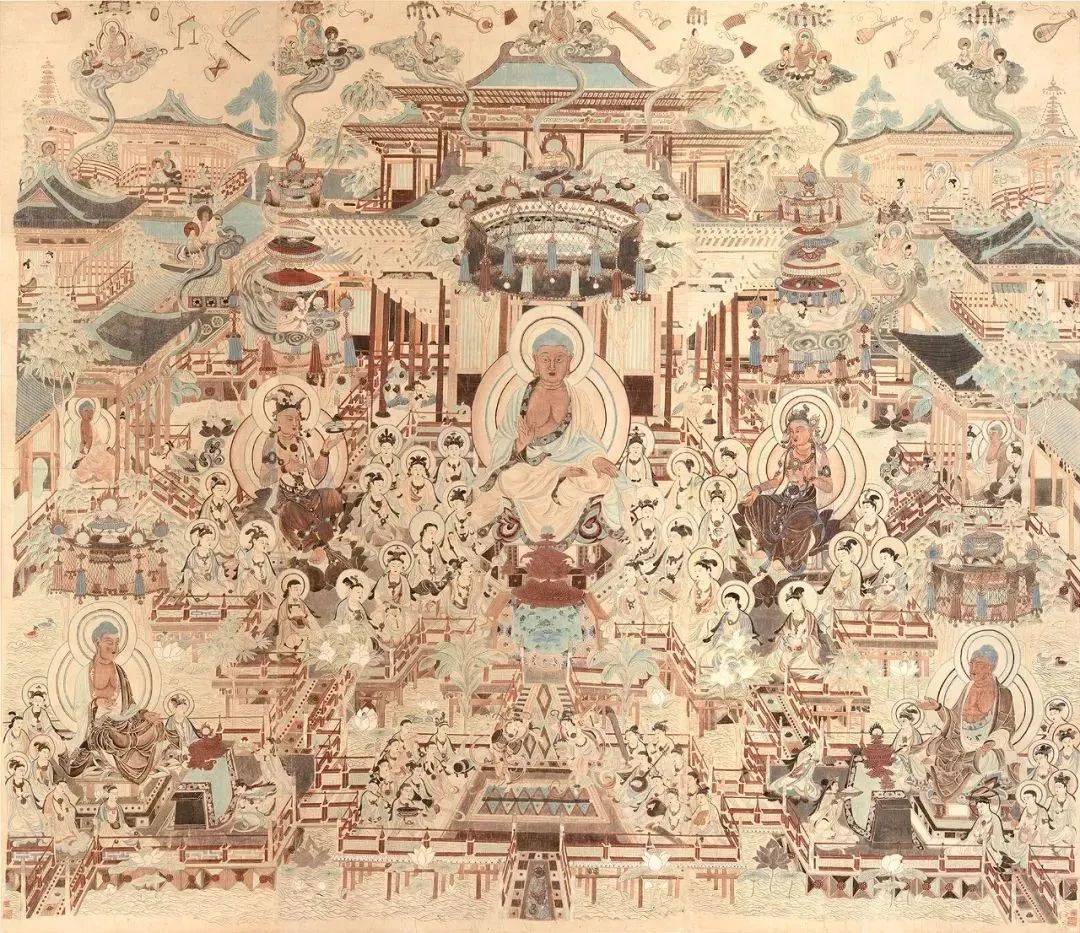
Chang Shana's Copy of Amitayus Sutra Illustration, Heyday of Tang Dynasty, Cave No. 172
272 cm × 300.5 cm, in 1946
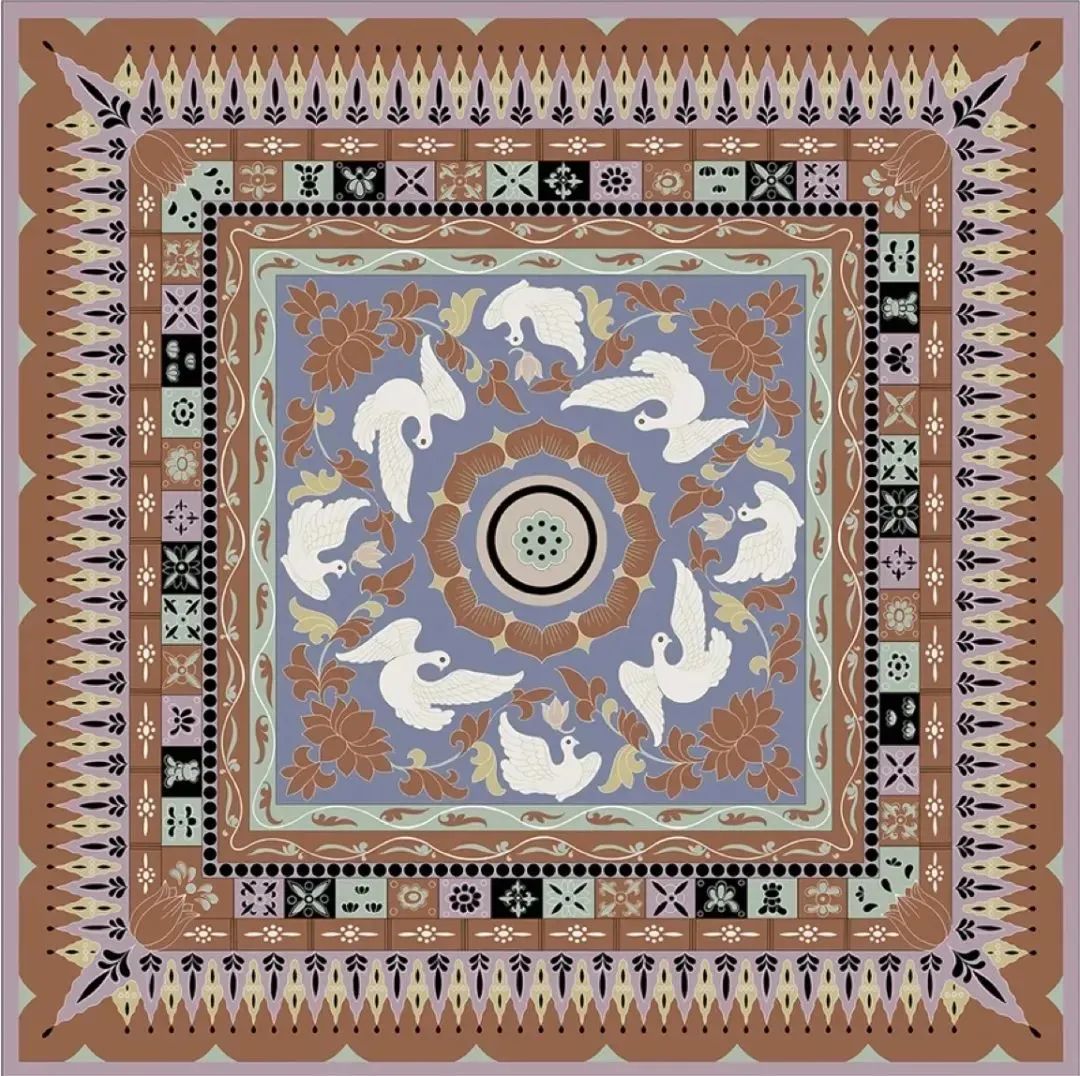
Chang Shana's Design of the Chinese National Gift "Dove of Peace Scarf" for the Asia-Pacific Peace Conference 90 cm × 90 cm, in 1952
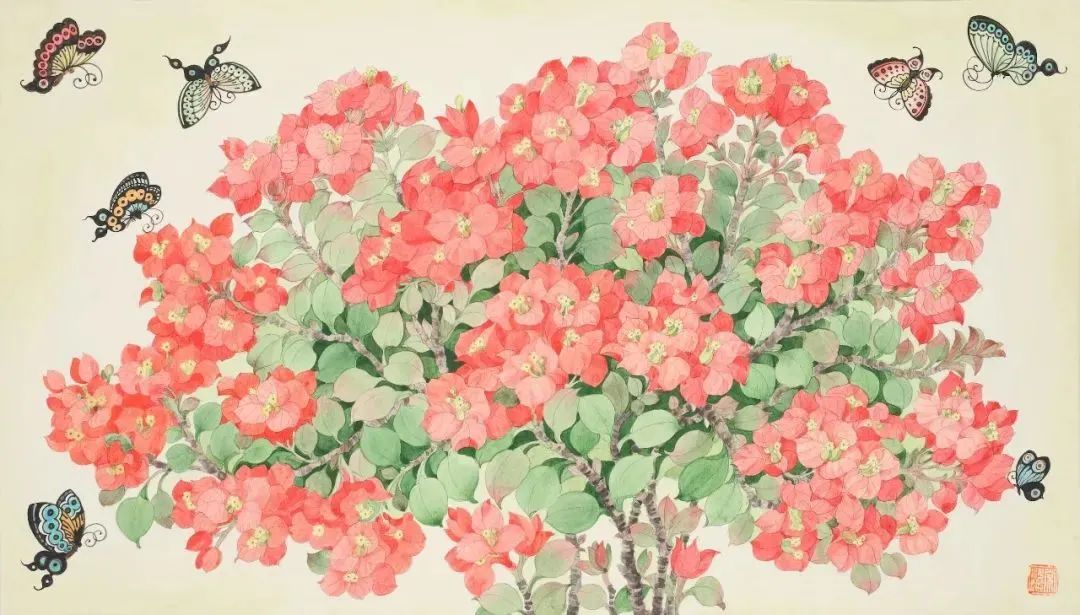
Chang Shana's Bougainvillea and Butterflies 39.5 cm × 69 cm, Gouache on Paper, 21st Century
Featuring over 400 artworks, the exhibition spans Chang Shana's Dunhuang reproductions, floral sketches, and architectural decorations, encapsulating her extraordinary artistic journey. Devoting her life to one cause and dedicating herself to it wholeheartedly, Chang Shana has passionately preserved and passed on the art of Dunhuang, creating for her country and designing for the people.
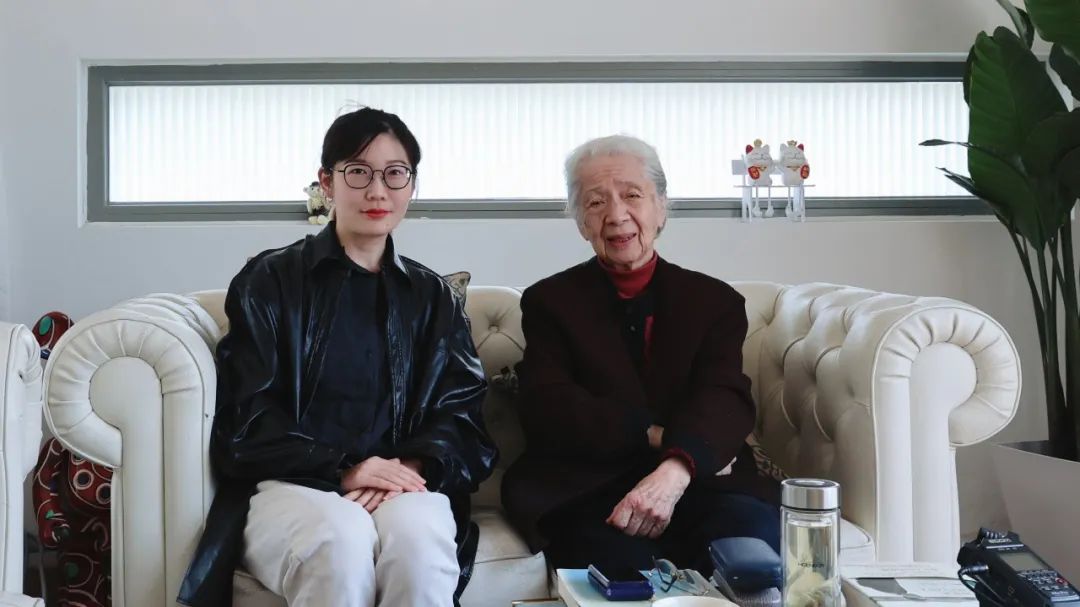
A Photo of the Interviewer and Chang Shana
Special thanks go to Guo Qiuhui and Zhang Jingsheng for their review of this article.

